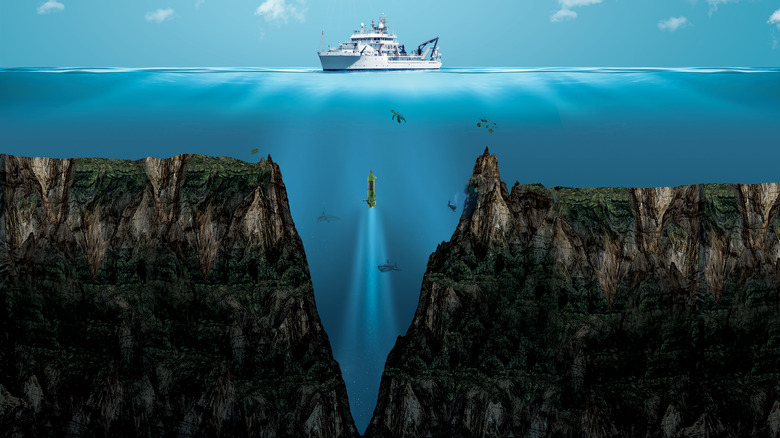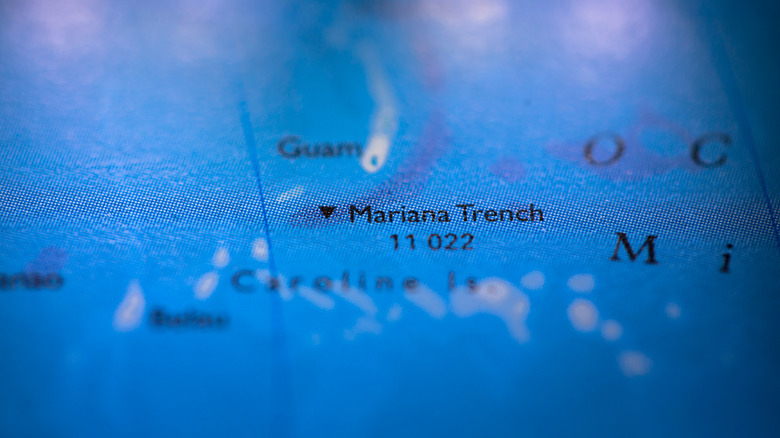The Truth Of The Mariana Trench
The ocean is one of the last places on our planet yet to be fully explored, and many mysteries lie waiting in the dark waters of the deep sea. The deepest point in the world, known as the Mariana Trench, is a whopping 7 miles below the surface of the water, over a mile deeper than Mount Everest is tall (via National Geographic).
The trench is one of a series of deep abysses formed by plate tectonics. When plates collide, sometimes one plate dives beneath the other, creating a long, deep scar in the Earth's crust. While the ocean floor is littered with these trenches, the Mariana has gained special attention and research due to its extreme depth. Indeed, the region has been established as a national monument by the American government to protect it for further study. Despite all this attention, only two people in history have ever reached the trench's deepest point — the Challenger Deep.
The first and only dive was over 60 years ago
The first and only time anyone dove to the depths of the Challenger Deep was back in 1960 (via BBC). Two men — U.S. Navy lieutenant Don Walsh and Swiss engineer Jacques Piccard — were chosen for the historical dive. Walsh recalls that the ultimate goal of the program was kept secret until after he volunteered and that one of the windows cracked under pressure at around 30,000 feet. Unfortunately, their diving vessel kicked up a significant amount of sediment that prevented the divers from getting any pictures, but amazingly, despite the immense pressure, they did spot a fish just before landing.
Unmanned subs have studied other deep-sea trenches and turned up strange organisms, but much remains to be learned about the deepest places in the world. According to National Geographic, some scientists believe that Walsh and Picard actually saw a sea cucumber, as bones would turn to fluid at that depth. Still, animals — particularly the bizarre wonders of deep-sea organisms — have surprised scientists in the past and innovated in ways not thought previously possible.

